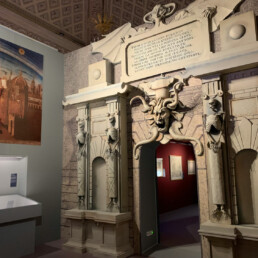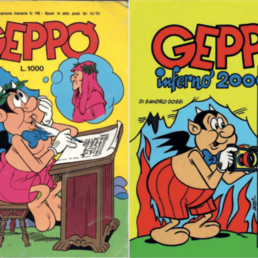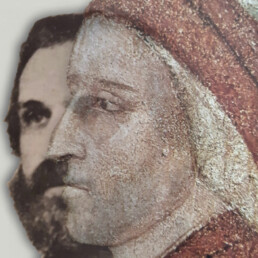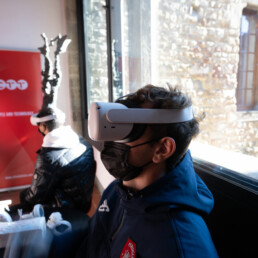The Stibbert Museum launches an online exhibition dedicated to the illustrated editions of the Divine Comedy
Available on the Museum website, it tells the story of the Anglo-Florentine collector’s passion for the poet
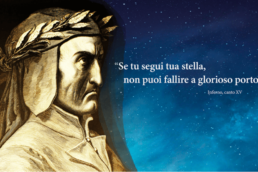
A small exhibition that details a special story is set up at the Stibbert Museum entitled “Se tu segui la stessa, non puoi fallire a glorioso porto“. Available online via the museum website, the exhibition displays the illustrated editions of the Divine Comedy preserved in Frederick Stibbert’s library. The Anglo-Florentine collector was very interested in the figure of Dante Alighieri, who in the nineteenth century came to embody the rediscovery of Italian historical values and therefore the revaluation of the Middle Ages. Inside the museum, there’s a bust of the poet made by the sculptor Francesco Gajarini.
The old editions of the Divine Comedy
The museum’s library houses rare editions of the Divine Comedy. Thanks to the online exhibition, it’s now possible to admire them with high-definition reproductions made available to visitors to the site. In addition to the original diamond editions – small books composed in minute characters – of the “Divine Comedy” and “Vita Nuova”, there are also famous illustrated editions of Dante’s poem, those by John Flaxman, Gustave Doré and Luigi Ademollo and Francesco Nenci.
The folio edition of Dante’s Commedia, illustrated by Luigi Ademollo and Francesco Nenci, was purchased by Stibbert in 1870. The publication reproduces the text of the Accademici della Crusca and had been printed in a limited number of copies.
However, the most famous version of the “Divine Comedy” is the one illustrated by the French painter Gustave Doré. Made in 1861, it was purchased by Stibbert in 1868 as he himself writes on the first page of each volume. The images are characterized by gloomy and restless atmospheres, that testify to the image that the nineteenth-century public had of Dante’s poem and of the era that had generated it. With his work, Doré contributed to the re-evaluation of the Middle Ages as one of the highest moments of European cultural development, according to that nationalist perspective rooted in romantic thought.
Frederick Stibbert and his passion for Dante
It was precisely in the wake of this revaluation of the period that Stibbert approached the figure of Dante and was fascinated by it. On June 14, 1865, a large Dantesque exhibition was inaugurated in Florence, held in the Palazzo del Podestà. Stibbert, just 27 years old and fresh out of his studies, was involved in the organization and made 41 pieces available for the exhibition dedicated to the Middle Ages, including full armor, shields, maces, swords, halberds and helmets. The exhibition represented an opportunity to get close to the figure of Dante, who intrigued young Stibbert. This began his interest in the Divine Comedy, still evidenced today by the valuable collection kept in the library of the museum, which now, thanks to this initiative, is accessible to everyone.

